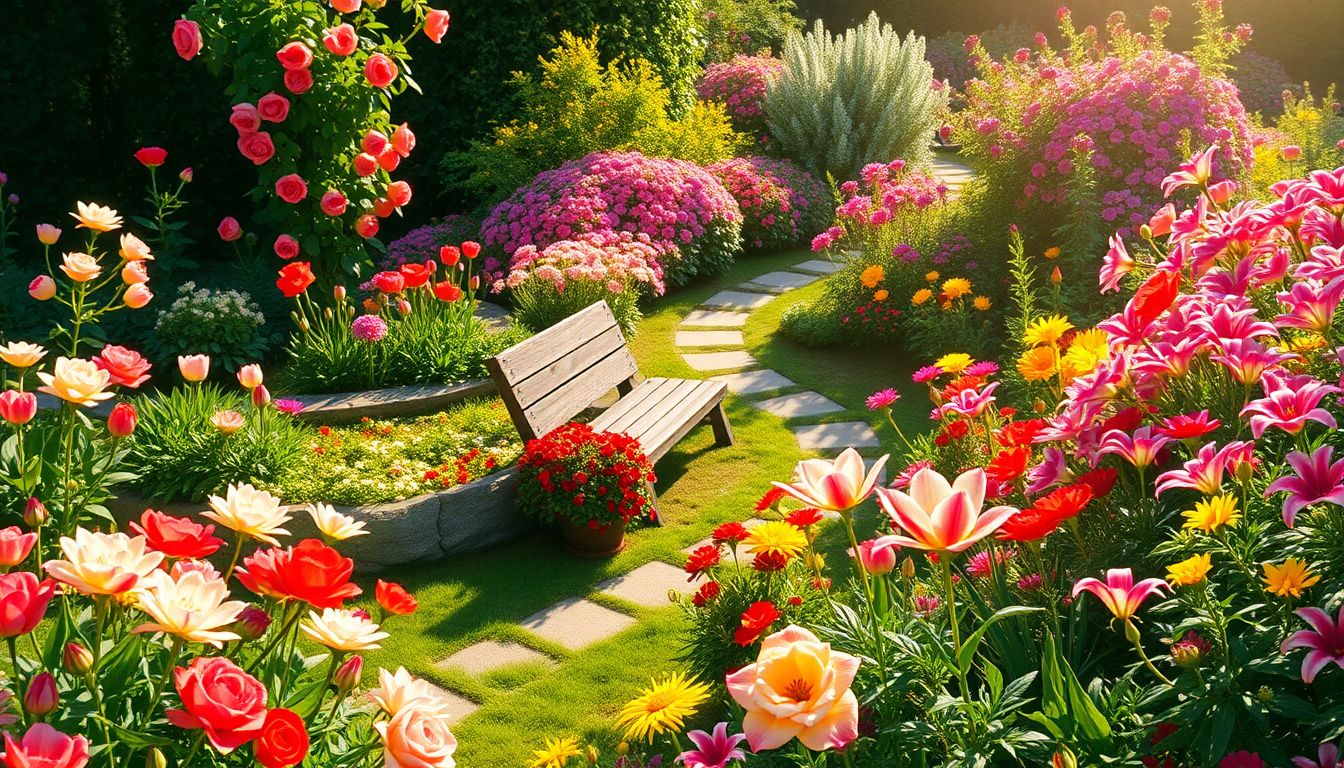
Gardening is more than just planting flowers and vegetables; it’s a journey of transformation. Did you know that tending to a garden can reduce stress and enhance overall well-being? A beautiful garden can also increase the value of your property significantly. The act of nurturing plants not only beautifies your surroundings but also enriches your life. Here are 15 essential tips to create a stunning garden that will thrive and bring joy.
Planning Your Dream Garden: Laying the Foundation
Assessing Your Space: Sunlight, Soil, and Microclimates
Understanding the nuances of your garden space is crucial. Different plants require varying amounts of sunlight; for instance, many flowers thrive with 6-8 hours of direct sunlight. Assess your soil type—a sandy, loamy, or clay-rich soil will affect plant growth. Consider using a soil test kit to determine pH levels and nutrient content.
Designing Your Garden Layout: Form and Function
Choosing a garden style can set the tone for your outdoor space. Whether it’s a cozy cottage garden or a sleek formal garden, design plays a vital role. Use graph paper or gardening software to visualize your layout. This planning step will help you see how plants and structures will fit into your landscape.
Choosing the Right Plants: Considering Hardiness and Aesthetics
The USDA plant hardiness zones are essential in selecting plants suited for your location. Each zone has specific temperature ranges that determine which plants will thrive. Visit USDA's plant hardiness zone map to guide your choices and check out local nurseries to find plants that flourish in your community's climate.
Cultivating a Thriving Garden: Planting and Care
Planting Techniques: Ensuring Successful Establishment
Proper planting depth and spacing can affect the success of your garden. For example, tomatoes should be buried deeper than they come in the pot. Use a trowel to create the right-sized hole—this simple tool makes all the difference in plant establishment.
Watering Wisely: Maintaining Optimal Moisture Levels
Watering techniques are critical for plant health. Overwatering can drown roots, while underwatering can stress them. It's best to water deeply and less frequently. This encourages plants to develop deep, resilient roots.
Fertilizing Your Garden: Nourishing Plants for Growth
Plants need nutrients to flourish, with key elements like nitrogen, phosphorus, and potassium playing vital roles. Slow-release fertilizers can be beneficial, providing steady nutrition without overwhelming plants. Use them to foster healthy growth and vibrant blooms.
Maintaining a Beautiful Garden: Ongoing Care and Attention
Weeding and Pest Control: Protecting Your Plants
Weeds can compete for nutrients and water, so effective weeding techniques matter. Consider organic pest control methods, such as introducing beneficial insects. Regularly inspecting your plants for pests helps catch issues early. Experts say that prevention is the best defense in sustainable gardening.
Mulching and Soil Improvement: Enhancing Soil Health
Mulching offers many benefits, including moisture retention and weed suppression. Studies show that mulching can reduce water consumption by up to 50%! Use organic materials like wood chips or shredded leaves to improve soil structure and protect your plants.
Pruning and Deadheading: Maintaining Shape and Bloom
Pruning keeps plants healthy and looking their best. Deadheading spent blooms encourages more flowers to grow. For example, cutting back roses can lead to a second bloom. Sharp, clean pruning shears are essential to prevent disease while cutting plants.
Adding the Finishing Touches: Enhancing Your Garden's Beauty
Incorporating Pathways and Structures: Creating Visual Interest
Pathways offer structure and visual appeal to your garden. They provide a way to navigate your space while enhancing the overall design. Use natural materials like stone or wood for a rustic touch that blends well with nature.
Adding Ornamental Elements: Sculptures, Fountains, and Lighting
Enhance your garden’s ambiance with ornamental elements like sculptures and fountains. Lighting can transform your garden after dark, creating a magical atmosphere. Consider options like string lights or solar garden lights that complement your garden's style.
Conclusion
Creating a beautiful garden takes effort, but the rewards are immense. These 15 tips span planning, planting, and ongoing care, all vital to achieving a thriving garden. Each step adds depth and character, capturing the transformative power of gardening. Start your journey today and share your gardening experiences in the comments below!
